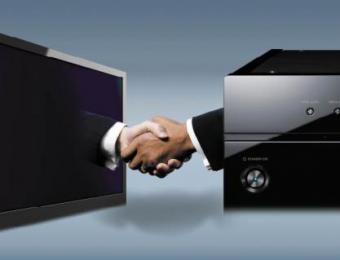
What is a PVR or DVR?
PVRs (personal video recorder) and DVRs (digital video recorder) are both consumer electronics home theatre devices that allows you to record video and audio to a digital storage device. PVRs typically store the content they're recording onto a built-in hard drive, but may also be able to save to an external hard drive, a USB drive, a network drive or a memory card.
This is where DVR and PVRs differ. A PVR will permanently store the files onto a hard drive, while a DVR will temporarily store files and allow you to export them if you wish to keep them longer.
The term 'PVR' is also used to describe other devices that can record video, including portable media players (PMPs), digital camcorders and video recording computer software. Many modern televisions also have built-in PVR functionality.
How are PVRs used?
The most common use for PVRs is to record a television show, to be viewed at a later time. Depending on their capabilities, PVRs can be set up to start recording at specific times on specific channels. Some PVRs can be set up in such a way as to allow you to watch one channel while recording another channel - although if you plan to do this, it's likely that you will need to buy one that's specifically designed for this purpose. Some PVRs can also filter out advertisements in their recordings too (although this feature is normally restricted to software PVRs).
Another feature of PVRs is the ability to 'time shift' - to pause or rewind whatever you're watching on TV. The PVR achieves this by constantly 'saving' a certain duration of the TV you're watching into its temporary memory.
PVRs are a relatively new technology, and are constantly evolving in terms of their features and functionalities.
What types of PVRs are available?
PVRs come in many shapes and forms, but the most common types (particularly in home theatre setups) are either standalone players, or those that are built into television sets. Most PVRs offer similar recording, scheduling and time shifting functionalities.
Where PVRs most commonly differ is how they store data. Some rely exclusively on a built-in hard drive, while others (particularly those built into TVs) rely exclusively on external hard drives. Some other types offer the ability to save your content directly onto a network attached storage device or a computer.
PVRs with built-in storage normally differ in terms of cost based on how much storage they offer. The more hard drive space a PVR contains, the more content it can store, and the more it's likely to cost.
|
Advantages
|
Disadvantages
|



